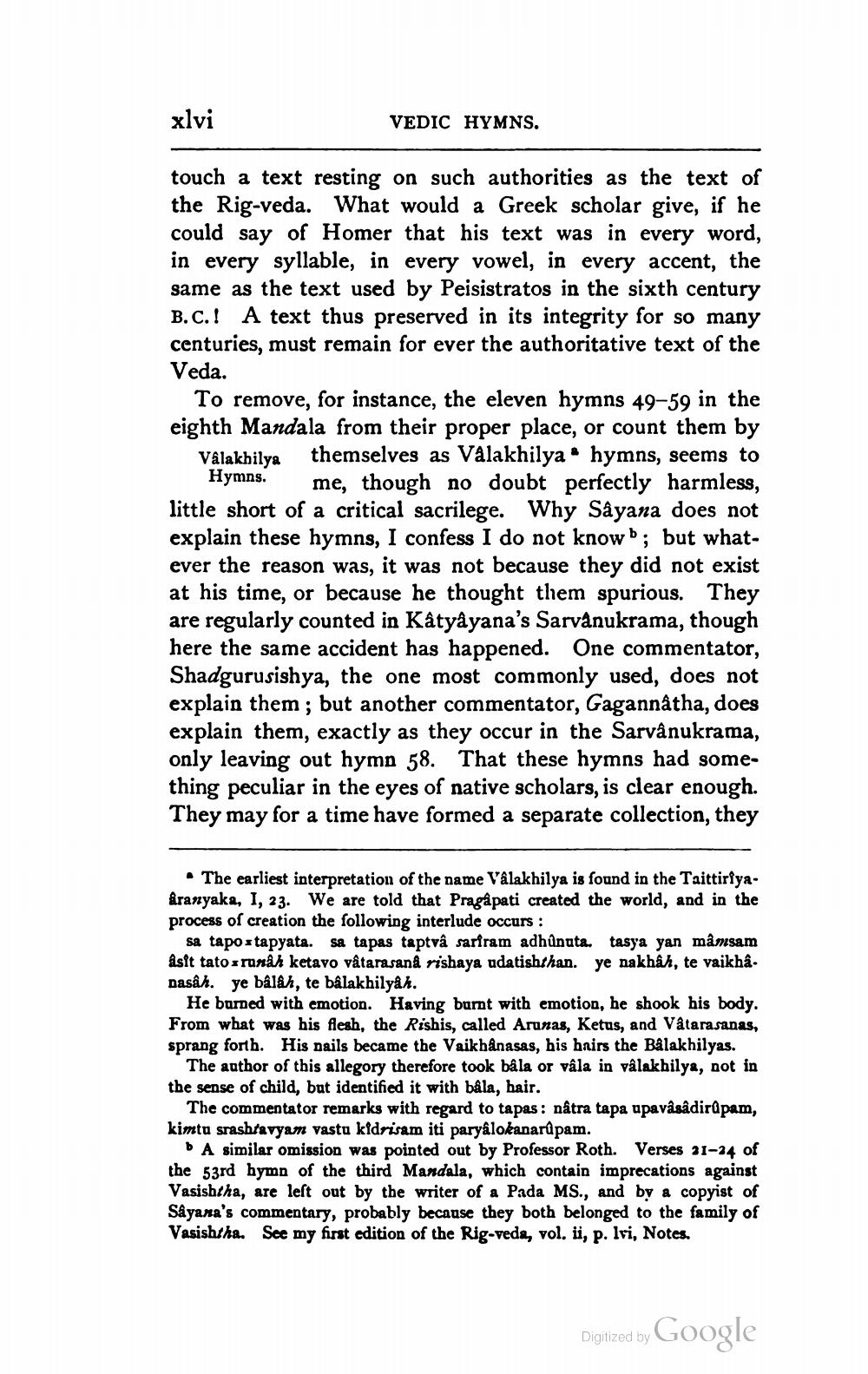________________
xlvi
touch a text resting on such authorities as the text of the Rig-veda. What would a Greek scholar give, if he could say of Homer that his text was in every word, in every syllable, in every vowel, in every accent, the same as the text used by Peisistratos in the sixth century B.C.! A text thus preserved in its integrity for so many centuries, must remain for ever the authoritative text of the Veda.
VEDIC HYMNS.
a
To remove, for instance, the eleven hymns 49-59 in the eighth Mandala from their proper place, or count them by Vâlakhilya themselves as Vålakhilya hymns, seems to Hymns. me, though no doubt perfectly harmless, little short of a critical sacrilege. Why Sâyana does not explain these hymns, I confess I do not know b; but whatever the reason was, it was not because they did not exist at his time, or because he thought them spurious. They are regularly counted in Kâtyâyana's Sarvânukrama, though here the same accident has happened. One commentator, Shadgurusishya, the one most commonly used, does not explain them; but another commentator, Gagannatha, does explain them, exactly as they occur in the Sarvânukrama, only leaving out hymn 58. That these hymns had something peculiar in the eyes of native scholars, is clear enough. They may for a time have formed a separate collection, they
• The earliest interpretation of the name Vâlakhilya is found in the Taittiriyaaranyaka, I, 23. We are told that Pragâpati created the world, and in the process of creation the following interlude occurs :
sa tapo tapyata. sa tapas taptvâ sarfram adhûnuta. tasya yan mâmsam âsît tato runâh ketavo vâtarasanâ rishaya udatishthan. ye nakhâh, te vaikhânasâh. ye bâlâh, te bâlakhilyâh.
He burned with emotion. Having burnt with emotion, he shook his body. From what was his flesh, the Rishis, called Arunas, Ketus, and Vâtarasanas, sprang forth. His nails became the Vaikhânasas, his hairs the Bâlakhilyas.
The author of this allegory therefore took bâla or vâla in vâlakhilya, not in the sense of child, but identified it with bâla, hair.
The commentator remarks with regard to tapas: nâtra tapa upavâsâdirûpam, kimtu srashravyam vastu kidrisam iti paryâlokanarûpam.
b A similar omission was pointed out by Professor Roth. Verses 21-24 of the 53rd hymn of the third Mandala, which contain imprecations against Vasishtha, are left out by the writer of a Pada MS., and by a copyist of Sâyana's commentary, probably because they both belonged to the family of Vasishtha. See my first edition of the Rig-veda, vol. ii, p. Ivi, Notes.
Digitized by Google




